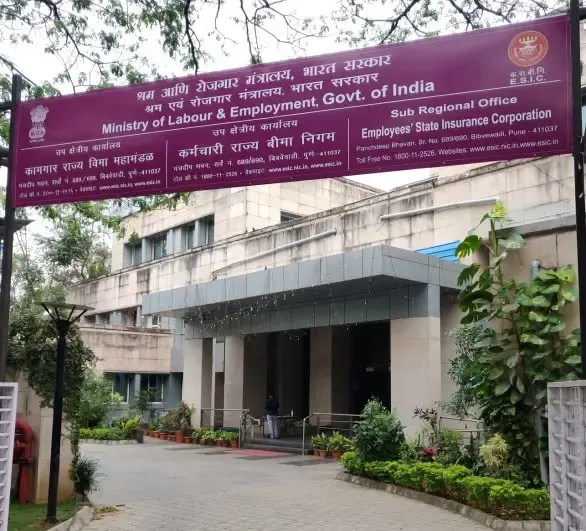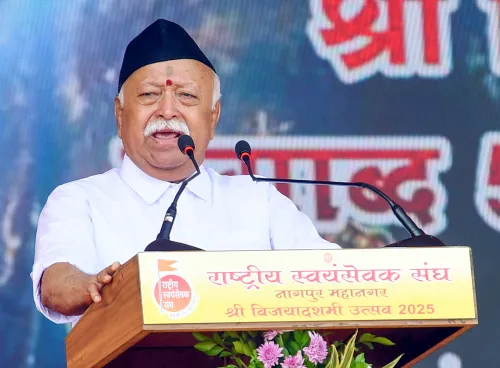What Are the Guidelines for the New Amnesty Scheme 2025 Issued by ESIC?

Synopsis
Key Takeaways
- The Amnesty Scheme 2025 aims to simplify dispute resolution.
- It will be active from October 1, 2025, to September 30, 2026.
- Employers and insured individuals can settle disputes outside of court.
- Cases must be resolved within six months of application.
- No damages will be imposed under certain conditions.
New Delhi, Oct 2 (NationPress) The Employees' State Insurance Corporation (ESIC) has released comprehensive guidelines regarding the Amnesty Scheme 2025, which is focused on the resolution of court cases and the withdrawal of prosecution cases.
This initiative aims to streamline compliance and alleviate the litigation burden to promote ease of doing business, as stated in an official announcement.
The Amnesty Scheme 2025 serves as a one-time opportunity for dispute resolution, aiming to decrease the existing backlog of court cases, encourage compliance under the ESI Act, and enhance operational simplicity.
The scheme allows both employers and insured individuals to settle disputes outside of court in a structured and transparent way. It will be active from October 1, 2025, to September 30, 2026.
For coverage-related disputes, the scheme is applicable to both closed and operational units. Units that have been closed for over five years with litigation pending for the same duration and without any assessment will have their cases dismissed. Units closed within five years must provide records, settle dues along with interest, and will not face any penalties.
Operational units can also resolve disputes by presenting records to validate their claims, with no penalties enforced. However, disputes involving employers who voluntarily registered through Form-01 on the ESIC portal are not included.
For disputes regarding contributions, the scheme includes cases contested under Sections 45A, 45AA, 75, 82, or Article 226 (without significant legal questions). Employers must obtain court approval, submit a request in the specified format, and pay both employers' and employees' contributions with interest according to the records. In instances where records are unavailable, documentation from the EPFO or Income Tax authorities may be used for validation.
If no records are found, employers must pay a minimum of 30% of the assessed contribution. Interest on dues will be charged at the updated contribution rate. No damages will be applied; however, employers must commit to future compliance.
Concerning disputes over damages, cases will be dismissed upon payment of 10% of the determined damages, provided contributions and interest have already been settled. If the ESIC has appealed to higher courts, damages as determined by lower courts will be accepted, leading to case dismissal.
Criminal cases filed under Section 84 against insured individuals for false declarations will be dismissed if excess amounts are reimbursed and a commitment is provided, with no interest charged. Cases pending for over five years where insured individuals are untraceable may also be withdrawn, excluding those involving conspiracy or forgery.
Prosecution cases under Sections 85 and 85A against employers may be dismissed if contributions and interest are paid based on existing records or alternative documents like EPFO or IT filings. Where records do not exist, dues will be assessed based on declared wages, SSO survey reports, or minimum wage standards. No damages will be imposed.
The scheme also addresses older cases under Sections 85(a) and 85(g) pending for over 15 years with dues not exceeding Rs 25,000.
For closed units, such cases may be withdrawn. For operational units, compliance updates must be made, and at least 30% of dues with interest must be paid. Cases under Section 85(e) for failure to submit returns may be withdrawn as the requirement has become redundant with digitalization, contingent on compliance. Cases of late submission of declaration forms pending for over three years may also be withdrawn if all compliance is fulfilled and accident cases are resolved.
To ensure smooth execution, Additional Commissioner cum Regional Directors/Regional Directors/Director (I/c)/Joint Director (I/c)/Deputy Director (I/c) of ESIC Regional & Sub-Regional Offices have been fully authorized to process withdrawals and settlements during the scheme's duration. A field-level committee comprised of legal and finance officers, along with panel advocates, will evaluate these cases.
All cases must be resolved within six months from the application date, and individuals who have previously benefitted from earlier amnesty schemes are also eligible for this new initiative.
By providing a practical, transparent, and employer-friendly framework for dispute resolution, this scheme eliminates procedural obstacles, facilitates the quicker closure of long-standing cases, and fosters confidence among stakeholders.
It is anticipated to relieve operational difficulties for employers, lessen the legal load on courts, and further enhance ESIC's position as a forward-thinking and responsive social security institution, as stated in the announcement.









